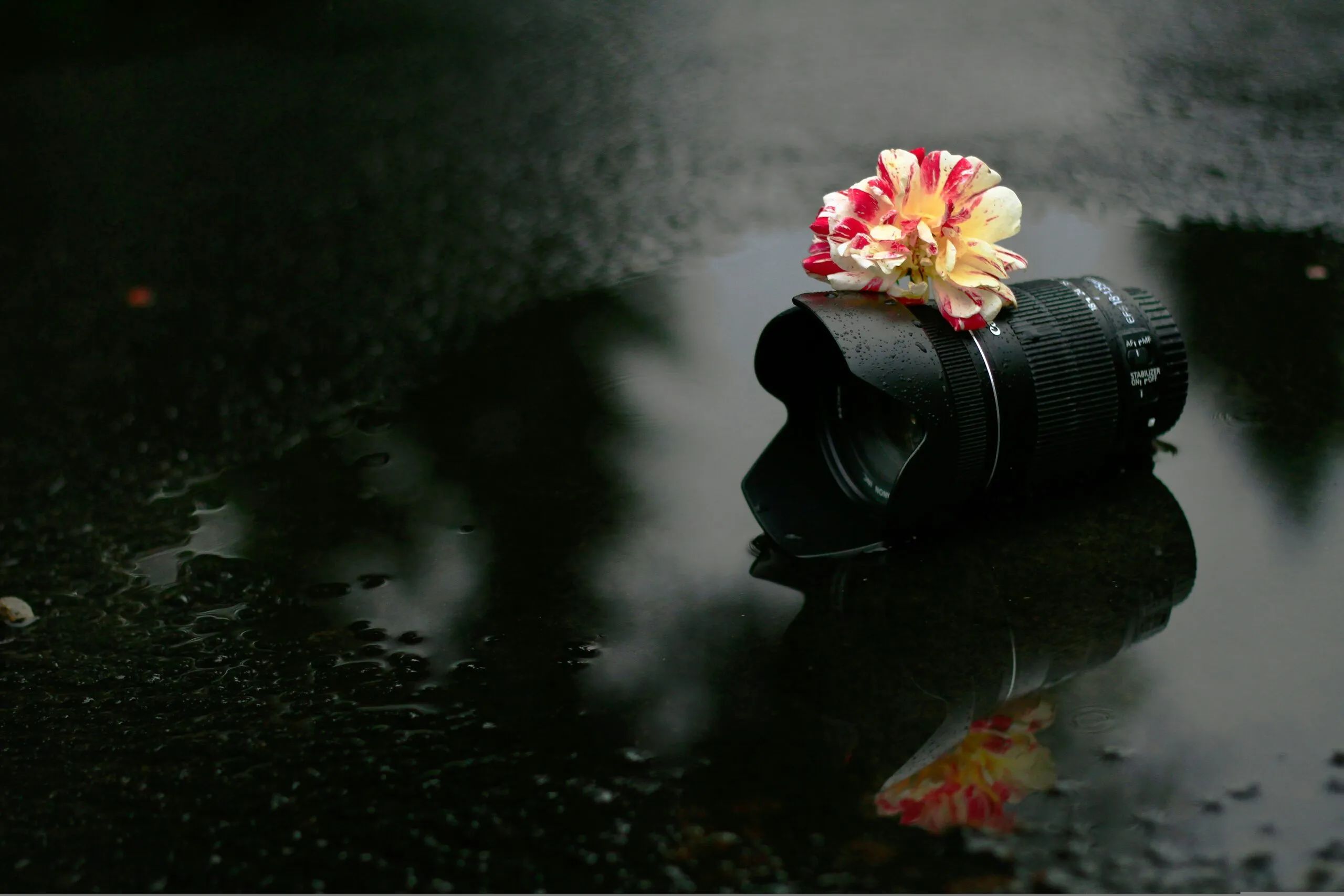
Understanding Mirrorless Cameras
Mirrorless cameras have emerged as a popular choice among travel photography enthusiasts, distinguished primarily by their design and functionality. Unlike Digital Single-Lens Reflex (DSLR) cameras, which utilize a mirror system to direct light from the lens to an optical viewfinder, mirrorless cameras bypass this mechanism, allowing for a more compact and lightweight body. This fundamental design choice offers several advantages for those who frequently wander with their cameras in tow.
One of the most notable features of mirrorless systems is their smaller size and reduced weight. This portability is invaluable for travelers, as it allows for easier transport without sacrificing image quality. The absence of a mirror means that these cameras can also accommodate larger sensors, making it possible to achieve higher resolutions and superior low-light performance—all essential factors for capturing stunning travel photographs.
The evolution of technology in mirrorless cameras has been remarkable. They often feature electronic viewfinders (EVFs) that provide real-time exposure previews, allowing photographers to see exactly how their images will turn out before they even press the shutter. This capability is a significant advantage, especially in dynamic and varying lighting conditions often encountered while traveling. Furthermore, many mirrorless systems come equipped with advanced autofocus systems that outperform traditional DSLR cameras in both speed and accuracy, proving essential for capturing fleeting moments on the go.
As mirrorless cameras continue to gain traction among travel photographers, their growing popularity can be attributed to the combination of portability, high performance, and innovative technology. These advantages have made mirrorless systems a preferred choice for many photographic adventurers, allowing for greater freedom in capturing the essence of their journeys without the burden of cumbersome equipment.
Top Mirrorless Cameras for Travel Photography
Travel photography enthusiasts require a reliable camera that can keep up with their adventurous lifestyle. The following list presents some of the best mirrorless cameras currently available, specifically designed to fulfill the demands of capturing breathtaking travel moments.
The Sony Alpha a6400 is well-regarded for its impressive autofocus capabilities, making it ideal for capturing fast-moving subjects. With a 24.2 megapixel APS-C sensor, this camera excels in image quality and low-light performance. Its compact body and lightweight design ensure ease of transport during travels, while the 11 frames per second continuous shooting speed provides versatility for action shots. The a6400 also boasts excellent lens compatibility, allowing users to switch between various lenses based on their photography needs.
Another top contender is the Fujifilm X-T30, which offers high resolution and rich color reproduction, thanks to its 26.1 megapixel X-Trans sensor. This camera incorporates advanced film simulation modes that appeal to creative photographers seeking to imitate classic film styles. Weighing less than most DSLRs, the X-T30 is a favorite for those looking for portability without compromising quality. Furthermore, its impressive battery life ensures that users can capture moments throughout the day without frequent recharging.
For enthusiasts seeking a versatile option, the Canon EOS M50 Mark II is a stellar choice. This mirrorless camera features a 24.1 megapixel sensor and Dual Pixel autofocus, ensuring sharp images and videos. Its vari-angle touchscreen provides flexibility in composing shots from various angles, making it perfect for capturing unique perspectives during travel. Additionally, the integrated Wi-Fi and Bluetooth allow seamless sharing, which is increasingly important for the social media-savvy traveler.
Lastly, the Nikon Z50 stands out with its robust build and excellent ergonomics. The 20.9 megapixel sensor produces high-quality images, while the camera’s compact design facilitates easy handling. The Z50 also supports a variety of Nikon lenses, expanding creative options for photographers seeking diverse shooting experiences.
Essential Accessories for Your Travel Photography Kit
When embarking on a journey with a mirrorless camera, the right accessories can elevate your travel photography experience. Selecting the essential items for your kit can significantly enhance your ability to capture stunning images, regardless of your photographic interest. A crucial component of any travel photography setup is the selection of lenses. Both zoom and prime lenses cater to various shooting scenarios; a zoom lens offers versatility and convenience, making it suitable for landscapes and street photography where flexibility is key. Conversely, a prime lens, with its typically larger aperture, excels in low-light conditions, making it ideal for portrait photography.
In addition to lenses, investing in a sturdy tripod can provide stability, particularly during long exposures or in low-light situations. This accessory is vital for landscape photographers who value sharpness and clarity in their images, especially in sunrise or sunset conditions. Moreover, a reliable camera bag is indispensable. It not only protects your equipment but also ensures easy access to your gear on the go. Look for bags with customizable compartments to accommodate your specific accessories, from your camera body to extra lenses.
Spare batteries and high-capacity memory cards are also essential for the on-the-move photographer. Travel photography often involves long days of shooting, meaning having extra batteries ensures your camera won’t run out of power when you’re capturing a breathtaking moment. Similarly, memory cards with ample storage help prevent interruptions during your photo sessions, allowing you to shoot freely without worrying about running out of space. When selecting accessories, consider your travel photography focus—whether it be landscapes, portraits, or street scenes—to ensure your kit is tailored to meet your specific needs, ultimately making your photography journey more rewarding.
Tips and Techniques for Travel Photography with Mirrorless Cameras
Travel photography presents a unique opportunity to capture the essence of different environments and cultures, and mirrorless cameras hold significant advantages for this purpose. One of the most valuable tips for photographers is to adeptly utilize low-light conditions, which are often prevalent during dawn and dusk or in interior settings. With their advanced sensor technology, many mirrorless cameras perform exceptionally well in low light. Utilizing wider apertures and adjusting the ISO settings can help prevent motion blur and grainy images, allowing you to capture stunning scenes even under challenging lighting.
Composition techniques play a crucial role in elevating your travel photography. Adopting the rule of thirds can help create more dynamic and engaging images. By positioning key elements off-center, you can draw the viewer’s eye and create a sense of depth. Incorporating leading lines and framing techniques can further enhance the visual appeal. Additionally, embracing local perspective can yield unique compositions that reflect the culture of your surroundings, making each photograph a story in itself.
Effective use of autofocus is another benefit of mirrorless cameras, as they typically feature fast and accurate focusing systems. Experimenting with different autofocus modes, such as single-point or continuous tracking, can enhance your ability to capture action shots, especially in busy travel environments. Furthermore, understanding the specific autofocus settings of your camera allows for quick adjustments tailored to various subjects, be it bustling market scenes or serene landscapes.
Post-processing is essential for enhancing the vibrancy and emotional impact of your travel photos. Leveraging editing software can help correct exposure, improve color balance, and sharpen images to make them truly stand out. Developing a consistent editing style can also strengthen your visual narrative, making each photograph a cohesive part of your travel story. Ultimately, adapting to diverse environments and cultures through these techniques will ensure you capture stunning images that encapsulate the essence of your journey.

